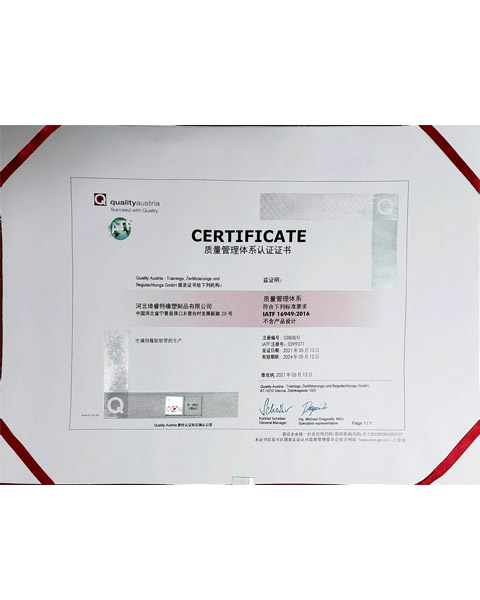Automotive Air Conditioning Hose Repair Tips and Techniques for Efficient Vehicle Cooling System Maintenance
Understanding Auto AC Hose Repair A Comprehensive Guide
When it comes to vehicle maintenance, one of the crucial systems that often goes overlooked is the air conditioning (AC) system. A well-functioning AC system is essential for providing comfort during hot weather, and part of that system includes the AC hoses. Over time, these hoses can wear out, develop leaks, or become damaged, leading to a decrease in performance or even total failure of the AC system. Understanding how to repair or replace these hoses is vital for any car owner.
What Are AC Hoses?
AC hoses are essential components of the vehicle’s air conditioning system. They are designed to transport refrigerant between various parts of the AC system, including the compressor, condenser, evaporator, and the expansion valve. There are typically two main types of hoses the high-pressure hose, which carries refrigerant in its gaseous state from the compressor to the condenser, and the low-pressure hose, which carries refrigerant in its liquid state from the condenser to the evaporator and back to the compressor.
Signs of AC Hose Problems
Before diving into the repair process, it is crucial to identify whether your AC hoses need attention. Some common signs of AC hose issues include
1. Refrigerant Leaks If you notice a puddle of coolant under your car, it may indicate a leak in one of the hoses. 2. Reduced Cooling Efficiency If the AC is not cooling as effectively as it used to, this might be due to a refrigerant leak. 3. Hissing or Bubbling Noises Unusual sounds coming from the AC system can signal air or refrigerant escaping from damaged hoses. 4. Visible Damage Inspect the hoses for cracks, bulges, or signs of wear.
Repairing or Replacing AC Hoses
auto ac hose repair

If you find that your AC hoses are damaged, you can opt for either repair or replacement. Here’s how to proceed
1. Diagnosis Use a UV dye or a refrigerant leak detector to pinpoint the exact location of any leaks. 2. Accessing the Hoses Depending on the vehicle model, you may need to remove some components to gain access to the AC hoses. Make sure to disconnect the battery to prevent any electrical issues.
3. Repairing the Hose Minor leaks may be repaired using specialized materials like hose clamps or sealants designed specifically for AC systems. However, this is typically a temporary fix.
4. Replacement If the damage is severe, replacing the entire hose is often the best course of action. Ensure that you purchase the correct hose that matches your vehicle’s specifications.
5. Installation When installing the new hose, make sure to use new O-rings and ensure all connections are tight to prevent future leaks.
6. Recharging the System After the hose has been replaced, the AC system must be recharged with refrigerant. This step is critical as running the AC on low refrigerant can damage the compressor.
Final Thoughts
While auto AC hose repair may seem daunting, understanding the process can make it manageable. Whether you choose to tackle the repair yourself or seek professional help, ensuring that your AC hoses are in good condition will not only enhance your comfort but also extend the life of your vehicle’s air conditioning system. Regular inspection and maintenance can save you significant time and money in the long run, keeping you cool throughout the hot months ahead. Always remember, when in doubt, consult with a professional mechanic to ensure the repairs are done correctly and safely.
-
Ultimate Spiral Protection for Hoses & CablesNewsJun.26,2025
-
The Ultimate Quick-Connect Solutions for Every NeedNewsJun.26,2025
-
SAE J1401 Brake Hose: Reliable Choice for Safe BrakingNewsJun.26,2025
-
Reliable J2064 A/C Hoses for Real-World Cooling NeedsNewsJun.26,2025
-
Heavy-Duty Sewer Jetting Hoses Built to LastNewsJun.26,2025
-
Fix Power Steering Tube Leaks Fast – Durable & Affordable SolutionNewsJun.26,2025

